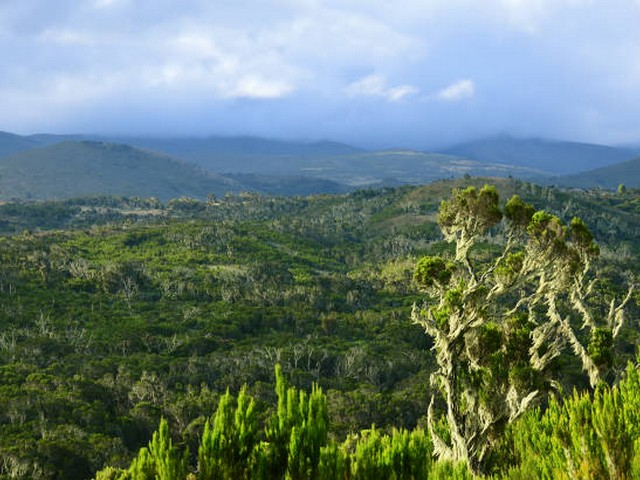Conquering Heights: Your Ultimate Kilimanjaro Trekking Preparation Checklist
Embarking on a journey to climb Mount Kilimanjaro is not just about conquering the highest peak in Africa; it’s about conquering yourself. It’s a journey through some of the most majestic landscapes on Earth, facing the raw power of nature and emerging triumphant. At the Kilimanjaro Centre for Trekking and Ecotourism (KCTE), we’re not just your guides; we’re your partners in this epic adventure. This blog post is your ultimate guide to preparing for your Kilimanjaro trek, ensuring you’re fully equipped and ready to embrace the challenge that awaits.
Why Prepare for Kilimanjaro?
Mount Kilimanjaro is a beacon for adventurers worldwide, standing tall at about 5,895 meters (19,341 feet). The journey to its summit involves navigating through five distinct climate zones—from tropical rainforest to arctic conditions. Preparation is not just recommended; it’s essential. Proper preparation maximizes your chance of a successful summit, enhances your enjoyment of the trek, and importantly, ensures your safety. Let’s walk through the ultimate Kilimanjaro trekking preparation checklist.
1. Physical Preparation: Training Your Body
Start Early
Begin your physical preparation at least six months before your trek. Focus on cardiovascular fitness through running, cycling, or swimming. Strength training should also be part of your regime, concentrating on leg strength and core stability.
Simulate the Trek
Incorporate hill or stair climbing into your workouts. If possible, train on uneven terrain and gradually increase the distance and elevation of your hikes to condition your body to the strain of long trekking days.
Practice with Your Gear
Use the boots and backpack you intend to bring to Kilimanjaro on your training hikes. This not only breaks in your boots but also gets you accustomed to your gear, minimizing the chance of discomfort on the actual climb.
2. Mental Preparation: Strengthening Your Mind
Understand the Challenge
Research the route you’ll be taking with KCTE and understand the day-to-day challenges you might face. This helps in setting realistic expectations and preparing mentally for what’s to come.
Visualization Techniques
Practice visualization techniques, imagining yourself successfully summiting and dealing positively with potential difficulties. This builds mental resilience that is crucial for high-altitude trekking.
Stay Positive
Maintain a positive mindset. Remember, mental stamina is as important as physical stamina on the slopes of Kilimanjaro.
3. Gear and Equipment: Packing Right
Clothing
- Base Layer: Breathable, moisture-wicking undergarments.
- Insulation Layer: Fleece or down jacket for warmth.
- Outer Layer: Waterproof and windproof jackets and pants.
- Headgear: Beanie, neck gaiter, and sunhat.
- Handwear: Lightweight gloves and insulated gloves.
Footwear
- Hiking Boots: Waterproof, broken-in, with good ankle support.
- Socks: Moisture-wicking socks and thermal socks.
Miscellaneous Gear
- Backpack: A comfortable, fitting pack with sufficient space for your gear.
- Sleeping Bag: A four-season sleeping bag rated for temperatures below freezing.
- Headlamp: For early morning summit treks and general campsite navigation.
4. Health and Nutrition
Visit a Doctor
Consult with a healthcare provider for a pre-trek checkup. Discuss vaccinations and preventative medicines for altitude sickness.
Hydration
Plan to drink at least three to four liters of water daily during your trek. The importance of hydration cannot be overstated when trekking at altitude.
Nutrition
Focus on high-energy, easily digestible foods. Discuss meal plans with KCTE to ensure they meet your dietary requirements and preferences.
5. Choosing the Right Guide
Why Choose KCTE?
At Kilimanjaro Centre for Trekking and Ecotourism, we pride ourselves on our experienced, friendly, and knowledgeable guides. Safety is our utmost priority, and we ensure a high guide-to-climber ratio to provide personalized attention.
Local Expertise
Our guides are locals, seasoned in every aspect of the mountain. Their expertise and companionship are invaluable in navigating the challenges of Kilimanjaro.
FAQs About Trekking Kilimanjaro
Q: What is the best time to climb Kilimanjaro?
A: The best times are during the dry seasons: January to mid-March and June to October.
Q: How dangerous is climbing Kilimanjaro?
A: With proper preparation, a reliable tour operator, and adherence to safety protocols, the risks are minimal. However, the journey is physically demanding and not without its challenges.
Q: How long does it take to climb Kilimanjaro?
A: It typically takes about 5 to 9 days, depending on the route and pace.
Ready to Embark on Your Adventure?
Climbing Kilimanjaro is a transformative experience, a testament to human endurance and spirit. With the right preparation, guided by the expertise at Kilimanjaro Centre for Trekking and Ecotourism, you’re set for an adventure of a lifetime. Are you ready to take the first step towards standing on the roof of Africa? Book your climb with us today and let your adventure begin!
Remember, every mountain top is within reach if you just keep climbing. Let’s conquer Kilimanjaro together!




